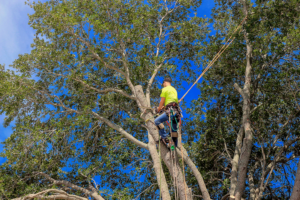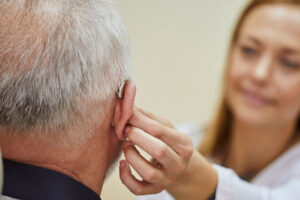Birdwatching is a hobby that brings nature closer to home, providing endless opportunities to observe various species in their natural environment. For bird lovers, there’s nothing quite like the joy of watching birds fluttering around in the yard, enjoying the food you’ve provided. But how do you attract more birds to your yard and make your birdwatching experience truly magical?
At Home Bird Feeder, we are dedicated to helping you make the most of your backyard birding. Whether you’re new to the hobby or a seasoned birdwatcher, setting up the right bird feeder, selecting the appropriate seed, and attracting the birds you want can be both exciting and rewarding. This guide will walk you through the essentials, offering tips and tricks to enhance your birdwatching experience.
Why Backyard Birdwatching Matters
Backyard birdwatching goes beyond being just a pastime; it’s a way to connect with nature, relieve stress, and contribute to local bird conservation efforts. Birds play a critical role in the ecosystem, and feeding them helps sustain populations, especially during times when natural food sources may be scarce. Additionally, attracting birds can enhance your garden’s aesthetic while offering educational opportunities for families and children to learn more about wildlife.
With the right setup, your backyard can become a hub of activity, filled with birds that add life and vibrancy to your space.
Choosing the Right Bird Feeder
One of the first steps in attracting birds to your yard is selecting the right feeder. There are many types of bird feeders, each designed to appeal to different species. At Home Bird Feeder, we recommend considering the following options based on the birds you’d like to attract:
1. Platform Feeders
These flat feeders are perfect for a wide range of birds, from sparrows to blue jays. They can hold various types of seed, including sunflower seeds, millet, and cracked corn. Since these feeders are open, they offer an inviting place for ground-feeding birds.
2. Tube Feeders
Tube feeders are ideal for smaller birds like finches and chickadees. They feature multiple perches and feeding ports, allowing birds to feed without competition. These feeders typically work best with small seeds like thistle or sunflower hearts.
3. Hopper Feeders
If you’re hoping to attract larger birds like cardinals or woodpeckers, hopper feeders are a great choice. These feeders can hold a larger amount of seed and have a perch for birds to sit on while eating. They are often enclosed, protecting the seed from the elements.
4. Nectar Feeders
For hummingbird enthusiasts, a nectar feeder is essential. These feeders are filled with a sugar-water solution that mimics the natural nectar found in flowers. They are specially designed to attract hummingbirds, with red accents to catch their attention.
By selecting the right feeder based on the species you wish to attract, you can create a welcoming environment for birds of all kinds.
Selecting the Best Bird Seed
Choosing the right bird seed is just as important as selecting the feeder. Different birds have different preferences, so offering a variety of seeds can attract a diverse group of visitors. Here are some popular options:
- Black Oil Sunflower Seeds: A favorite for many species, these seeds are high in fat, making them especially attractive to birds like cardinals, chickadees, and woodpeckers.
- Nyjer (Thistle) Seeds: These small seeds are perfect for finches, siskins, and other small songbirds. Be sure to use a tube feeder with small feeding ports to keep the seed contained.
- Millet: Ground-feeding birds like sparrows and doves enjoy millet. It can be spread on the ground or offered in a platform feeder.
- Peanuts: Whole or shelled peanuts are a great high-energy food for jays, woodpeckers, and even squirrels. Just be sure to avoid salted or flavored peanuts.
Offering a variety of seeds ensures that you can attract a wide range of birds, enhancing your birdwatching experience.
Where to Place Your Bird Feeder
Placement is key to successfully attracting birds. Birds need to feel safe and comfortable while they eat, so placing your feeder in the right spot can make all the difference.
1. Near Trees and Shrubs
Birds use trees and shrubs for cover and as a place to perch. Placing your feeder near natural vegetation offers them a sense of security and easy access to food.
2. Away from Predators
It’s important to place your feeder in a location that is safe from predators like cats. A raised feeder, or one placed in an area where cats cannot easily reach, will give birds the peace of mind they need to visit regularly.
3. Visible and Accessible
Birds are more likely to visit feeders that are easy to spot. Position your feeder in a location where birds can see it from a distance, but also ensure that it’s accessible for you to refill and clean.
Maintaining Your Bird Feeder
Once you’ve set up your feeder, regular maintenance is crucial to keeping your birds healthy. Clean your feeder at least once a week, especially in humid or rainy conditions, to prevent the growth of mold or bacteria in the seed. For nectar feeders, change the nectar every few days, as sugar water can spoil quickly in hot weather.
Additionally, keeping your bird feeder clean helps prevent the spread of disease among birds. By maintaining a clean feeder, you ensure that your backyard remains a safe and inviting place for birds.
Common Backyard Birds You Can Attract
Different bird species will visit your feeder depending on your location and the types of food you offer. Here are some common backyard birds you might see:
- American Goldfinch: These bright yellow birds love Nyjer seeds and frequent tube feeders.
- Northern Cardinal: With their distinctive red color, cardinals are easily attracted to sunflower seeds in hopper feeders.
- Chickadee: These small, friendly birds are often seen at tube feeders filled with sunflower seeds.
- Blue Jay: Known for their striking blue feathers, blue jays are attracted to peanuts and sunflower seeds.
- Hummingbirds: Attracted to nectar feeders, these tiny birds bring energy and excitement to any backyard.
By offering the right seed and maintaining your feeder, you’ll be able to enjoy these birds and many others right in your backyard.
The Joy and Benefits of Backyard Birdwatching
At Home Bird Feeder, we believe that backyard birdwatching offers more than just visual pleasure. It’s an opportunity to reconnect with nature, reduce stress, and promote mindfulness. The sounds of birds chirping and the sight of them feeding can have a calming effect, providing a peaceful escape from the hustle and bustle of daily life.
Furthermore, by attracting and feeding birds, you’re contributing to their conservation. Birds are important pollinators and pest controllers, playing a vital role in maintaining the balance of ecosystems. In a way, your backyard can become a sanctuary not just for birds, but also for nature itself.
Conclusion: Creating a Bird-Friendly Backyard
As you embark on your backyard birdwatching journey, remember that patience and consistency are key. At Home Bird Feeder, our mission is to help you create a bird-friendly environment that invites birds to your yard and enhances your connection with nature. By selecting the right bird feeder, choosing the best seed, and placing your feeder in the right location, you’ll be able to enjoy the beauty of birds up close.
With a bit of effort and dedication, your backyard can become a vibrant oasis of bird activity, offering endless enjoyment for you and your family. So why wait? Start today, and experience the joy of birdwatching with your very own Home Bird Feeder setup.




